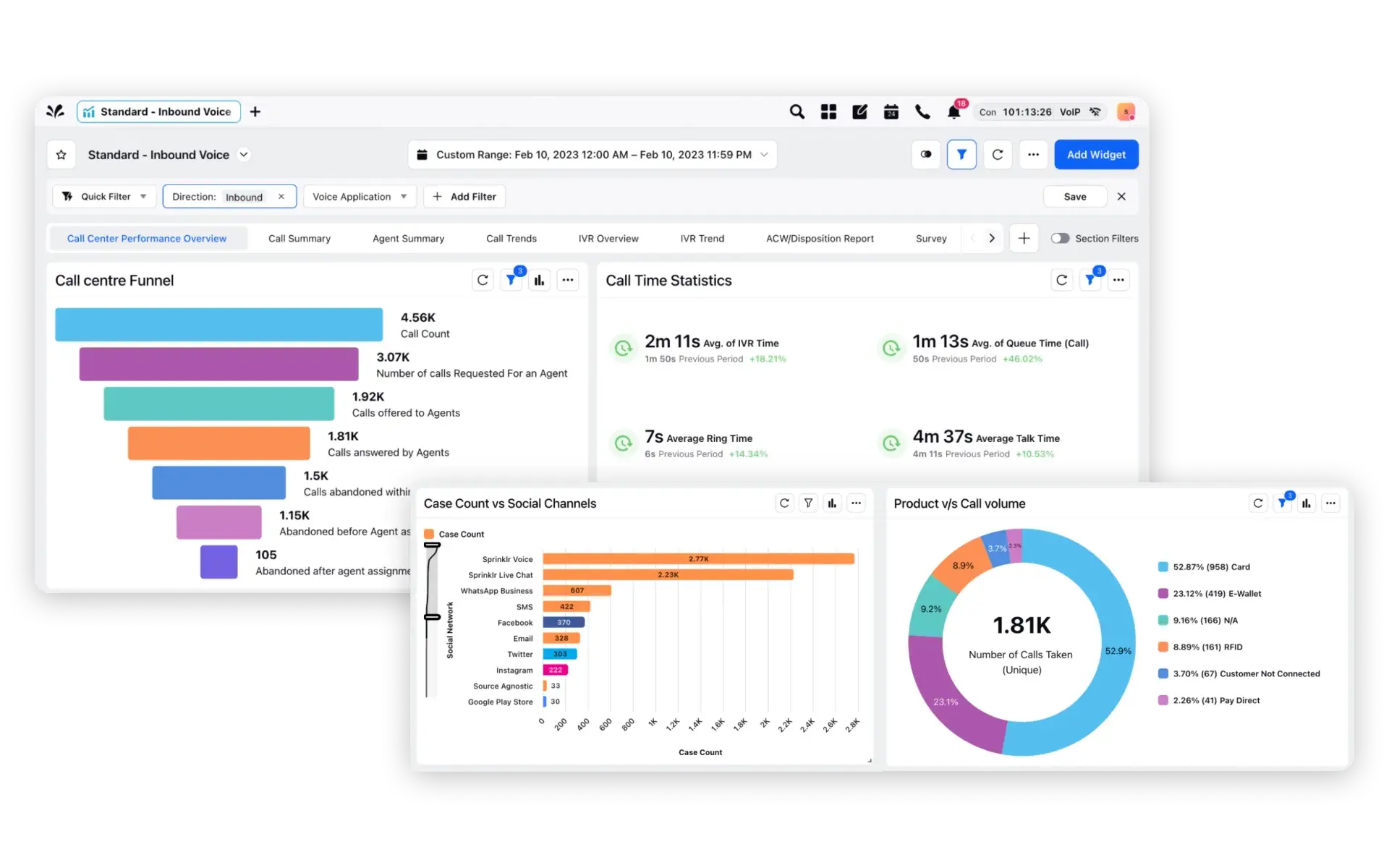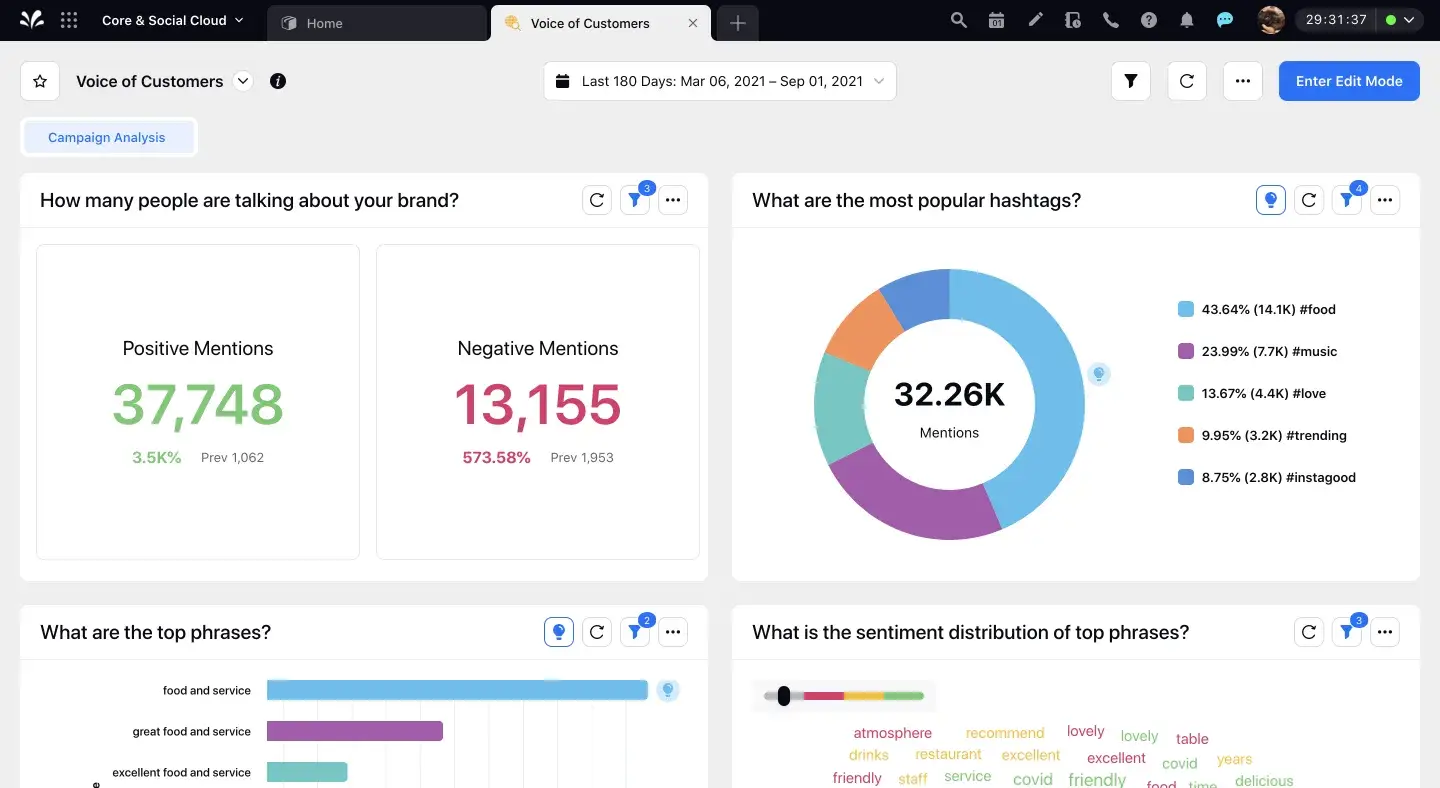The AI-first unified platform for front-office teams
Consolidate listening and insights, social media management, campaign lifecycle management and customer service in one unified platform.

How to un-silo your Contact Centre and inspire better Enterprise Teamwork
Martin Hill-Wilson, a prominent thought leader in the customer service and CX space, shares his thoughts on silo-ism and how it has led to the fall of CX. He also outlines the essential steps to un-silo your contact centre and foster collaboration.
I’ll start with an example of why customer behaviour and expectations will drive organisations to embrace deep collaboration.
Imagine yourself as an online fashion retailer catering to a core demographic of female customers aged between twenty and early thirties. Your audience discovers you and each other primarily through TikTok and Instagram. You compete for their attention with frequent releases of new collections that are extensively professionally modeled and amplified through influencer and consumer-generated content. You acknowledge all positive UGC (user-generated content) to engage others.
“Internal lines of responsibility between brand awareness, marketing, sales, service, design, manufacturing or logistics are invisible to your audience. It’s a never-ending conversation for them with what they assume is a unified brand in terms of hearing and responding.”
They want to know about model sizes, garment textures, restock dates on popular items, launch dates and issues with online ordering. They will share and amplify criticism around inconsistent sizing between fashion brands or non-inclusive model representation.
They fret when deliveries are late or about a product that does not match expectations. They stress about returns and the need for rapid refunds to repay Klarna or whichever ‘buy now pay later’ provider they use. Meanwhile, a select few are invited into a private community to offer deeper insight for the brand to learn from.
These conversations happen across public and private platforms, and multiple communication channels requiring a mix of data sources and workflow to engage with them effectively. And, of course, the expectation is that engagement is real-time, low effort, personalised and effective in delivering whatever is needed.
Research shows that functional priorities based on deeply rooted silo behaviours still compromise customer experience. The traditional expectation of contact centres is to deal with the fallout from this way of working. Happily, this is now changing in recognition that it’s a no-win situation for both the customer and organisation in terms of cost, effort, and goodwill.
In its place is a new model of internal teamwork based on lean, agile principles complimented with actionable insight and service design skills. This has started an evolution in the contact centre’s role towards becoming an insight hub that feeds the rest of the organisation with improvement and innovation opportunities.
This journey also sets the scene for deeper cooperation between Marketing, Sales and Service – one that enables customer lifecycle management based on aligned aims and metrics underpinned with a common shared infrastructure of cloud platforms and services.
In this article, I aim to explore the background of this journey and the steps involved.
Why do silos even exist?
Earlier this year, I hosted a 90-minute discussion with award-winning CX leaders. It was based on findings from a global survey on the state of CX. Yes, I know there are so many of them!
Anyway, in response to the question, “What do you believe will be the biggest obstacles to your CX program’s success in the next 18 months?” guess what dominated everyone’s concerns? The impact of silos. Since the survey launched in 2020, silos remain the top concern for half of respondents.
Silo-ism is a mindset that occurs when different departments or teams operate in isolation. The term is derived from the farm storage silo, designed to isolate and protect its contents.
Silo behaviour is based on a lack of sharing and is easy to spot.
Low/no sharing can include information, goals, tools, priorities, and processes with anyone outside their group. As a result, this tribal mindset is more prone to groupthink and typically has diminished awareness of any ‘bigger picture’ they operate in.
“One of the key consequences of silo-ism is a failure to support shared company-wide goals such as CX actively.”
Of course, many business leaders are now aware this is a critical competency for growth and survival. One that rises or falls based on a collective ability to deliver end-to-end journeys and associated outcomes for customers. And yet research shows that silos remain the number one obstacle for CX leaders.
How can this be?
How to un-silo your contact centre teams
The core of the problem is that it’s a habit that too often goes unchallenged. It is how business leaders have been schooled to drive performance and efficiency. Based on a belief that specialist skills and a narrow focus remain the easiest way to organise large numbers of people. The annual planning cycle entrenches this pattern of behaviour. We set goals, budgets and incentives that might align to a corporate P&L target but not necessarily to benefit other stakeholders.
What’s the impact? Teams prioritise what they are rewarded for caring about. Since we know brains are excellent at customising our everyday reality around a given set of priorities, the unimportant becomes invisible until something brings them back into conscious view. In our case, this could be a VoC (voice of customer) briefing from a CX leader explaining how you and your team impact customer satisfaction and what needs to be improved to strengthen loyalty.
In other words, functionally orientated teams can exist in unconscious incompetence with insufficient motivation to improve unless nudged to do so.
We also encourage this specialism from the outset of a person’s career. Given your skills, wouldn’t you be best in HR, Sales, Marketing, Finance, and Operations? People start to model ‘local’ culture – looking and sounding a certain way. Understandably, many hold greater allegiance to their team than to their organisation. And as we know, customer experience needs coordinated organisational responsiveness.
Managers play a crucial role in influencing this perspective, especially around their team’s broader organisational role. Some have an instinct for communicating the bigger picture of customer experience management. These are most likely to help break the cycle of functional isolation and bring people together more collaboratively.
That said, this remains a bottom-up evolution because I don’t see C-suite enthusiasm for ripping up the rule book and rethinking how their organisations could function. Instead, we are witnessing a slower-paced growth. Based on a growing number of organisations that use cross-functional teamwork that leverages diverse perspectives and experiences to tackle everything from innovation to customer experience management.
This approach is often based on an agile methodology, which has found broader organisational adoption beyond the technology teams needing a better way to deliver their services than traditional waterfall planning and execution. It has grown in popularity as an approach that fits the speed and degree of change all organisations now face.
Contact centres that need to collaborate to fix customer issues are at the centre of this organisational trend and have always looked for effective approaches to continuous improvement.
Contact Centre as an Insight Hub
Until recently, contact centre leaders found it much harder to influence their functional colleagues to evidence required changes. Conversational analytics, AI-generated insight and performance reporting combined with voice of customer feedback now offer real-time evidence of where problems exist and what needs fixing.

Using this in the context of the multi-skilled, agile-based teamwork I just described is now a regular feature in organisations committed to excellent customer service. In fact, I have had the pleasure of seeing many of them become European award winners over the last few years of judging. As a result, other organisations have been motivated to learn and invest in this capability.
Beyond the ‘fix it’ agenda are broader opportunities for adding value to the rest of the business.
Social listening can combine with conversational analytics to surface sales opportunities, topics for marketing campaigns, competitor insight, or product needs. At the same time, customer advocacy/criticism can be mined for many aspects of organisational performance, such as website functionality, pricing, logistics etc. Even surfacing topics such as brand effectiveness in ESG (environmental, social, and governance) or EDI (equity, diversity and inclusion) are the ones that matter for reputation and customer affinity.

While some work is needed to translate these customer insights into a set of consumable services for internal audiences, contact centres have a clear opportunity to transform their internal value as an insight hub – from cost centre to value generator.

From Silos to Ecosystems
It is worth pausing for a moment to appreciate the enabling role that today’s generation of technology plays in making this even possible.
Anyone with a contact centre history knows just how much data is generated daily in a typical contact centre. Yet only a tiny fraction ever translated into insight, with an even smaller amount becoming available on a near real-time basis for operational decision-making. The net result was a reactive mode of service delivery, with everyone chasing hard to catch up.
This was the consequence of siloed technology. It was designed and delivered as point solutions requiring expensive integration, which lacked the flexibility to adapt to changing needs. Many contact centres are still in the process of transitioning from these legacy restrictions.
Instead, we now have cloud-based, single-platform architectures that unify channel management and reporting and enable deep integration between interaction, data and workflow. Open standards, process automation and APIs allow ecosystems to expand across functions to enable end-to-end views of customer journeys.
In effect, the technology allows a customer service ecosystem to mature into a complete customer lifecycle ecosystem.
While this is a future ambition for most organisations, the impact this will have on dissolving silos will be profound. That is, once mindsets change. The current approach remains siloed, resulting in separate budgeting and unaligned roadmaps. As a result, Sales, Marketing and Service teams need to reinvest in essentially the same cloud solutions.
“Why duplicate systems of engagement across Marketing, Sales, Service, or other customer-facing roles such as success management? They all operate within a common context of customer lifecycle management.”
The benefits of 360-degree insights into customer behaviour across the entire lifecycle are compelling and obvious. As are the benefits of coordinated customer engagement campaigns between these functional teams.
I’m sure this will eventually change. And the agents of that change, as ever, will be customers. In this world, unless you have one ecosystem, you simply won’t survive.

